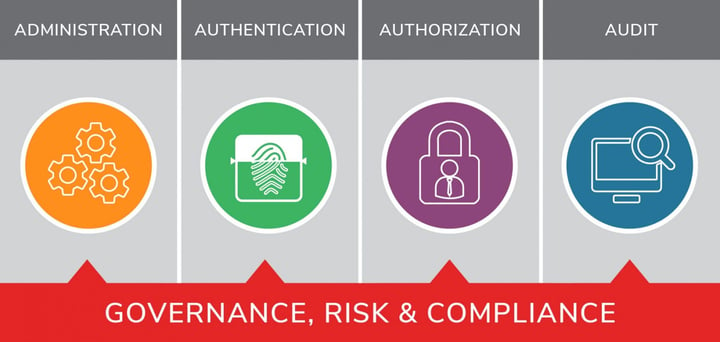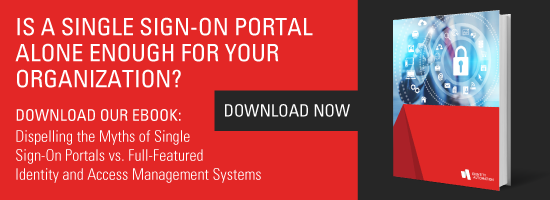
Recently, we’ve been discussing what you must consider when choosing between a single identity and access management (IAM) vendor platform versus multi-vendor point products. In this final installation, we’ll take a closer look at best-of-breed and security as two final considerations and wrap it all up.
On a daily basis, we’re confronted with the need to make trade-offs. We have to give up one thing to obtain another—it’s how the world works. However, some trade-offs can actually leave us more vulnerable and less secure than we realize.
Let’s take identity management solutions as an example. You’re investing in an identity management solution in order to make your organization more secure. You have two options: You can purchase best-of-breed point solutions that address specific security tasks, or you can invest in a single, integrated identity management platform, which doesn’t offer the depth of point solutions, but is more comprehensive and simplifies identity management.
Read on to learn why trading off best-in-breed solutions for a single identity management platform keeps you more secure in the long run.
Best-of-Breed
There’s a reason businesses are attracted to point solutions: They’re frequently best-of-breed. They do one thing really, really well. When you purchase such point solutions, you know you’re getting a top-of-the-line solution for a single issue.
- Single-vendor platform: When you purchase a single platform that comprises multiple solutions, you’re compromising to a certain extent. A platform offers a variety of solutions in one place, so it can’t provide the best of every possible solution. With that said, it is possible to find a vendor with best-in-breed capabilities in at least one area—often multiple.
- Multi-vendor point products: Best-of-breed solutions are narrowly focused and have great depth of features. What you need to ask yourself is whether you actually need that depth. You might discover that there are more bells and whistles than what’s truly necessary. Moreover, your team members might not have the technical expertise or time to use all of those features. Additionally, point solutions can’t handle cross-functional security concerns, which leaves you more vulnerable. So are you really getting value from a best-of-breed identity management solution in that case, or are you just paying for functionality you aren’t likely to ever use?
A robust identity and access control solution requires fully addressing each of the Four Pillars of Identity. Click on the graphic below to see the key capabilities needed.
Security
One of the main reasons you are buying an identity management solution is to increase your organization's security position. While some point products might offer more security bells and whistles, you need to ask if that “sizzle” actually makes your company more secure.
- Single-vendor platform: Modern IAM platforms offer a comprehensive approach to identity management that considers security needs in an integrated manner. They are designed to ensure that unauthorized people are unable to access an organization's sensitive, business-critical data and IP. To eliminate human error, most of these processes are automated and can run at scale and in real time. This means they are often significantly faster and more complete when it comes to addressing the top identity-related threats.
- Multi-vendor point products: Because point products have a narrow focus, they help you address specific security tasks. However, those tasks are limited in scope and don’t take into consideration cross-functional security concerns. You also bear the burden of integrating all of these solutions yourself, which opens your organization up to additional security concerns, as well as hefty maintenance overhead to make sure all the products are running in concert.
The Bottom Line
As we’ve covered throughout this series, a single identity management platform offers several clear advantages over point solutions, such as easier procurement and implementation, less integration hassle, and several key long-term benefits. Finally, this post explained how best-of-breed solutions don’t offer the comprehensive approach to security and identity management that a platform will.
For your convenience, here’s a neat little summarizing table:
|
FACTOR |
SINGLE-VENDOR SOLUTION |
MULTIPLE-VENDOR SOLUTION |
|
Procurement effort |
Lower |
Higher |
|
Implementation difficulty |
Vendor handles it |
Customer handles it—outside vendors may not know the intricacies of all systems |
|
Integration complexity |
Lower |
Higher |
|
Technical support |
Range of support packages |
Limited support; customer has to reach out to multiple vendors |
|
Training |
Variety of training options |
Limited options |
|
Product upgrades |
Slower, but much more comprehensive upgrades |
Faster |
|
Vendor longevity |
Larger companies, less risk |
Smaller firms, more risk |
|
Cost |
Lower (because of volume discounts) |
Higher (because of separate smaller service packages purchased) |
|
Best-of-breed choices |
Impossible on a per-feature basis |
Possible |
|
Security |
Comprehensive approach |
Narrow focus |
Now, obviously we’re a little biased about taking the platform approach. However, many companies prefer or are mandated to go down the point product path, so as not to be too dependent on any one vendor.
It’s important to understand that you can start implementing a platform without a doing a complete rip and replace project. Our IAM solution, RapidIdentity, can be bought as a whole integrated system, or you can augment your technology gaps with our point products. This enables you to replace and upgrade on your own schedule, with the knowledge that you are building over time toward a comprehensive, integrated solution.
Read previous blogs in this series:


Comments